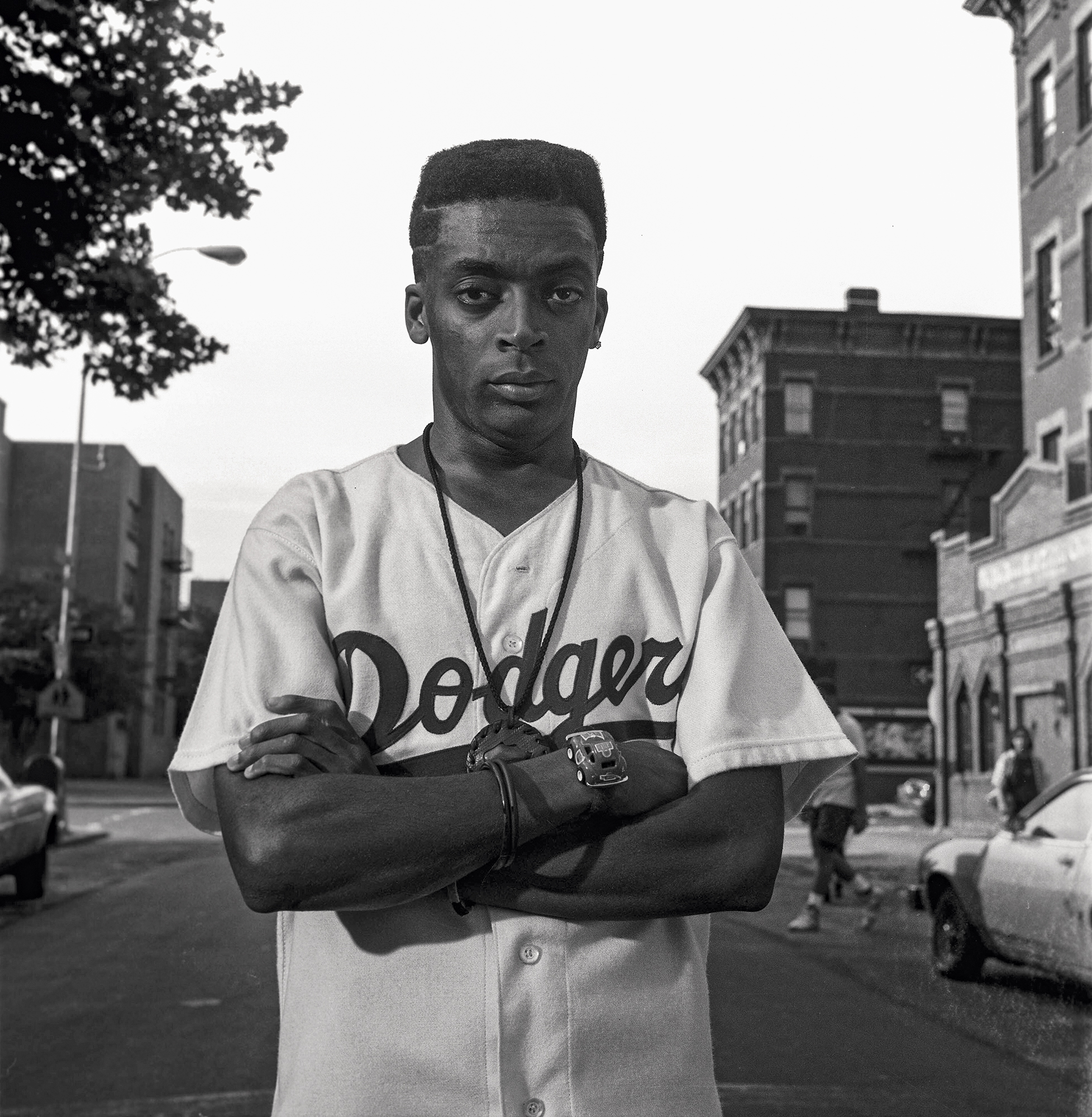
Ten Details That Shaped Do the Right Thing
Abbey Lustgarten on the making of one of Spike Lee’s best-known films.
Since its release in 1989, Spike Lee’s Do the Right Thing has evaded critics’ attempts to draw neat conclusions from its ending; Vincent Canby’s 1989 New York Times review called it “shattering and maybe too ambiguous for its own good.” An electrifying portrayal of the way that racism, violence, and gentrification detonate a deadly incident on a brutally hot Brooklyn day, Do the Right Thing raises questions about urgent social and political issues—questions that still resonate today. In this adapted piece, originally published by the Criterion Collection, producer Abbey Lustgarten outlines ten key takeaways from the making of the film.
For more on Lee’s influences and inspirations, visit Spike Lee: Creative Sources, on view at the Brooklyn Museum from October 7, 2023, to February 4, 2024.
1. Spike Lee was inspired to write Do the Right Thing by what is now known as the Howard Beach incident. On December 20, 1986, a mob of twelve angry white men chased down and beat three black men who had just left a pizzeria in the predominantly Italian-American community. During the pursuit, the mob forced one of their victims, Michael Griffith, to run onto the Belt Parkway, where he was hit by a car and killed. In the behind-the-scenes footage of Do the Right Thing, Lee recalls the protest led by Reverend Al Sharpton and the call for all African-Americans to boycott white-owned pizzerias, an act that inspired the scene in which Buggin Out instigates a boycott of Sal’s.
2. Lee had originally envisioned Robert De Niro for the role of Sal, which ended up going to Danny Aiello. Lee and De Niro had gotten together the night after the Howard Beach incident. They discussed racism and how the animosity between black and Italian communities had escalated. Lee liked the idea of what it would mean for Italian-Americans to see the iconic De Niro in a role that was sympathetic to black people. In the end, De Niro turned it down, feeling that he’d performed roles like Sal and didn’t want to repeat them.
3. For a few shots in the film, cinematographer Ernest Dickerson created the look of the hottest day of the summer by lighting a can of Sterno and holding it underneath the camera lens. The heat waves drifted up and acted as a filter between the lens and the action.
4. Ruth E. Carter, the costume designer on Do the Right Thing and several other Spike Lee films, said that when it came to the wardrobe for Sal’s son, Pino, John Turturro “was very much involved in choosing it.” The actor told Carter that he wanted to have an experience with his mom and go shopping with her for his character. To add to Pino’s story, he came up with the idea of having the character arrive at the pizzeria in a decidedly Italian-American-style outfit of black shirt and black pants, a costume choice that contrasts with what he wears while making pizzas and indicates his outsider status in the neighborhood.
5. Roger Guenveur Smith was not initially cast in the film, but every day during production he’d ask Lee to find a place for him in the story. Lee told him to come up with some ideas and he’d try to work him into the film, so Guenveur Smith created the character of Smiley, a young man with a stutter who sells pictures of Martin Luther King Jr. and Malcolm X. According to Lee, it was the actor’s idea to put a photo of the two civil rights heroes on the wall at Sal’s in the scene where the pizzeria burns.
6. Spike Lee tapped the Nation of Islam’s paramilitary wing, the Fruit of Islam, to function as facilitators and crew protection during the shoot in Bedford-Stuyvesant. He also refused to work with New York City unions such as the Teamsters—a required hire for films shot in the city at the time—unless they agreed to employ more people of color, which they ended up doing.
7. “Fight the Power” was not the first song Public Enemy submitted as the anthem for Do the Right Thing. Spike Lee wanted a riff on the gospel classic “Lift Every Voice and Sing.” The group sent in a song that Lee ended up rejecting. Then they came up with “Fight the Power,” which shares its title with an Isley Brothers hit. Though that tune was written in 1975, Public Enemy front man Chuck D says its lyrics, including the phrase “All the bullshit going down,” inspired their own song.
8. On July 17, 2014, New York Police Department officer Daniel Pantaleo killed Eric Garner by using an illegal chokehold. After the incident spread, gathering national and international attention, Lee posted a video in which he intercut Radio Raheem’s death in Do the Right Thing with Garner’s. The use of the chokehold in the film’s climax had actually been inspired by another case of police brutality in 1983 against Michael Stewart, a Brooklyn resident and graffiti artist who died of a spinal injury after cops arrested and beat him. In the scene where Raheem is murdered, you can hear someone in the crowd saying, “They did it again. Just like Michael Stewart.”
9. Singer Frank Sinatra was not happy that his picture was included on the wall of Sal’s pizzeria. Lee claims that years later, when he wanted to use a piece of Sinatra’s music in Jungle Fever, the singer said, “Hell no! You burned my picture in Do the Right Thing!” But ultimately they worked it out.
10. The word fuck can be heard in various forms throughout the film a total of 255 times—apparently the highest number of fucks in any movie from the 1980s.
Abbey Lustgarten is a producer at the Criterion Collection, the publisher of Do the Right Thing on home video.